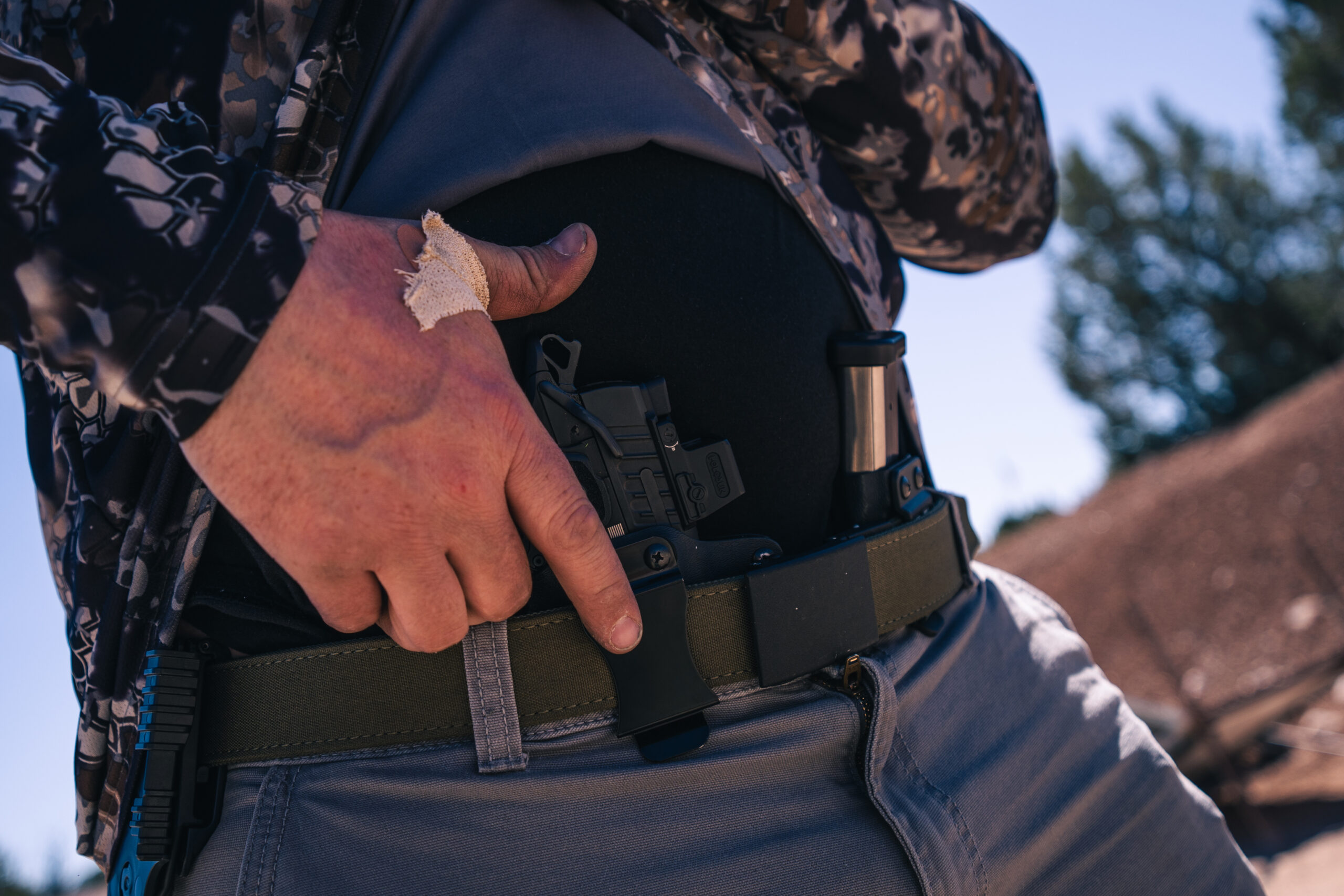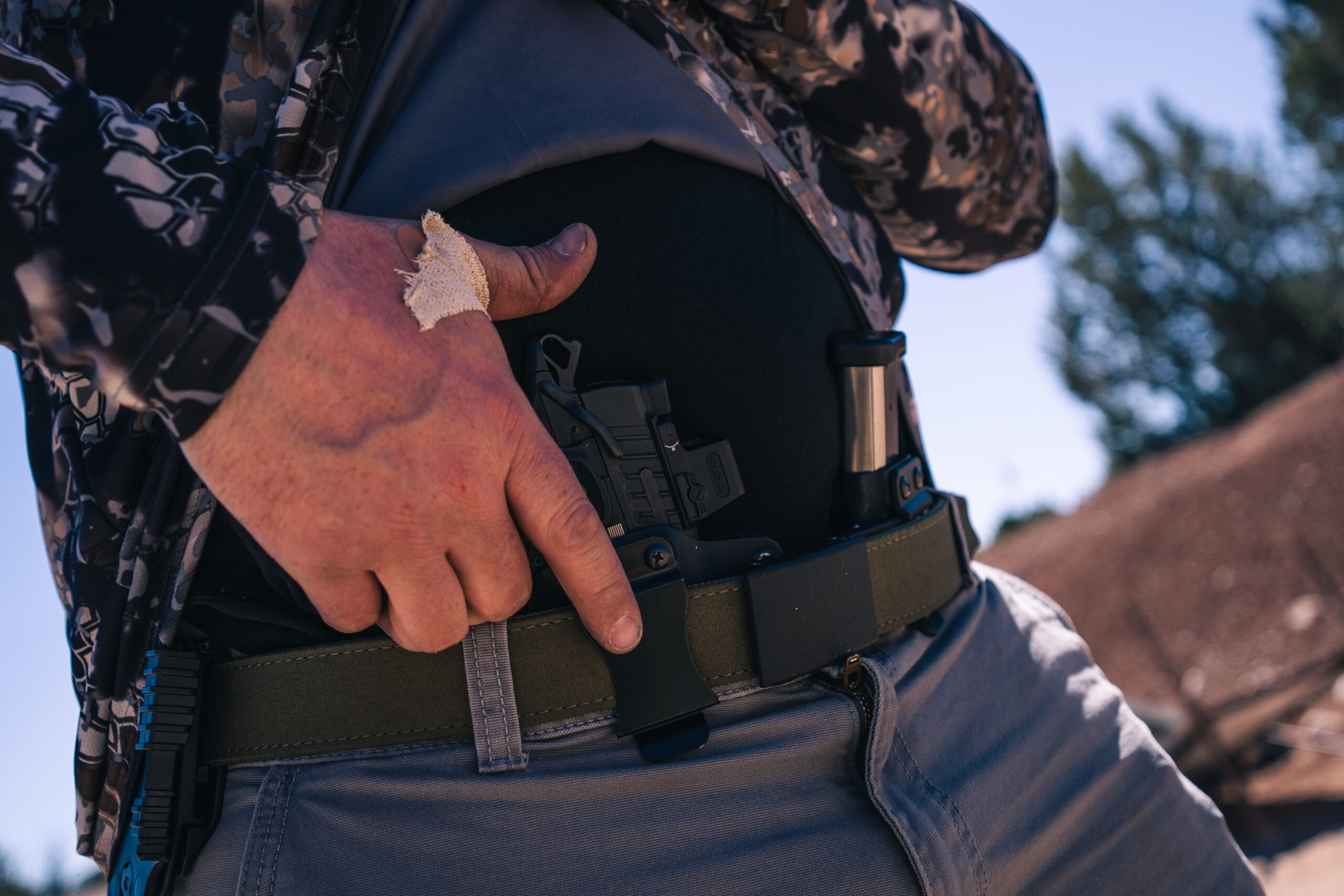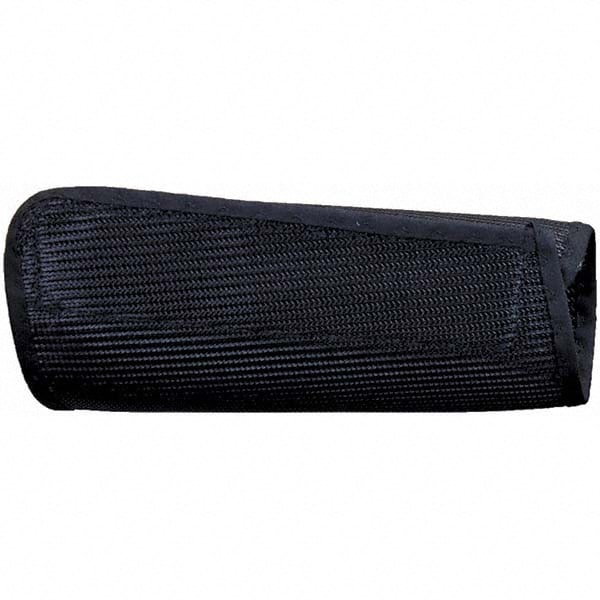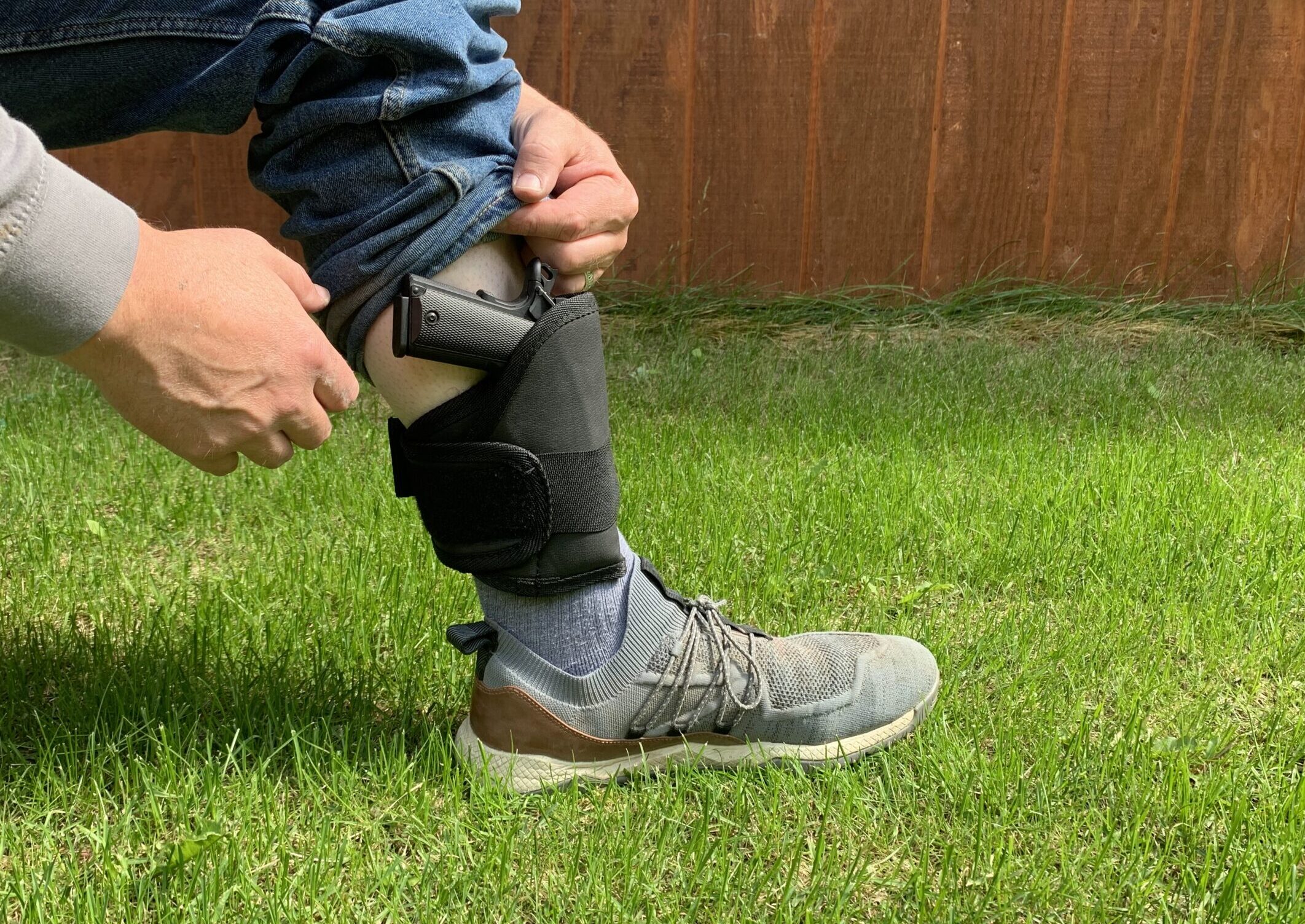Contents
- I. Introduction to Holster Materials and Environmental Impact
- II. Understanding Different Holster Materials
- 1. Leather
- 2. Kydex
- 3. Nylon
- 4 . Hybrid Materials Hybrid holsters combine multiple materials to offer the best of both worlds. For example, a hybrid holster might consist of a leather backing for comfort against the body and a Kydex shell for superior retention and durability. The use of hybrid materials allows manufacturers to optimize the strengths of each material while mitigating their weaknesses. This results in holsters that provide enhanced comfort, better retention, and increased overall performance. Remember, when choosing a holster material, consider factors such as your personal preferences, intended use, climate conditions you’ll be exposed to, and level of maintenance required. By understanding the characteristics of different holster materials, you can make an informed decision that suits your needs and ensures the safety and convenience of carrying your firearm.
- III. Evaluating the Environmental Impact of Holster Materials
- IV. Comparing Leather and Synthetic Holster Materials
- V. Exploring Sustainable Alternatives for Holster Manufacturing
- VI. Frequently Asked Questions about Holster Materials and Environmental Concerns
- 1. Are leather holsters environmentally friendly?
- 2. What are synthetic holsters made of?
- 3. Can I recycle my old holster?
- 4. Do all holster materials emit harmful substances?
- 5. Are there any eco-friendly alternatives available?
- 6. Can leather holsters be composted?
- 7. What should I do with my old holster if I no longer use it?
- 8. Are there any regulations regarding holster materials and their impact on the environment?
- 9. How can I ensure that my chosen holster has minimal environmental impact?
- 10. Can I make my own environmentally friendly holster at home?
I. Introduction to Holster Materials and Environmental Impact

When it comes to choosing a holster for your firearm, there are several factors to consider, including comfort, durability, and functionality. However, one aspect that is often overlooked is the environmental impact of the materials used in holster production.
In recent years, there has been an increased awareness of sustainability and eco-friendliness in various industries. The same applies to holsters, as consumers become more conscious of the environmental consequences associated with their choices.
The Need for Sustainable Materials
In today’s world where climate change and pollution are pressing concerns, opting for sustainable materials becomes crucial. Traditional holster materials such as leather or synthetic polymers can have significant negative impacts on the environment during their production and disposal processes.
Leather holsters require large amounts of water and energy during tanning processes, which often involve harmful chemicals that can contaminate water sources if not properly managed. Additionally, leather production contributes to deforestation due to the need for cattle grazing land.
Synthetic polymer holsters are typically made from non-biodegradable plastics derived from fossil fuels. These materials take hundreds of years to decompose in landfills once they reach the end of their lifespan.
Eco-Friendly Alternatives
To address these concerns surrounding traditional holster materials, manufacturers have started exploring eco-friendly alternatives that offer similar performance without compromising on quality or style.
One such material gaining popularity is Kydex®, a thermoplastic acrylic-polyvinyl chloride (PVC) alloy known for its durability and versatility. Kydex® holsters are molded precisely to fit specific firearm models while being resistant to moisture absorption and chemical damage.
Recycled Materials: A Sustainable Choice
Another sustainable option is holsters made from recycled materials. Some manufacturers are using recycled nylon or plastic bottles to create durable and environmentally friendly holsters.
By repurposing these materials, the demand for new resources is reduced, minimizing the carbon footprint associated with holster production. Recycled material holsters also contribute to waste management by diverting plastic waste from landfills.
Conclusion
As responsible consumers, it’s essential to consider the environmental impact of our choices, even when selecting something as seemingly insignificant as a holster. By opting for sustainable materials like Kydex® or recycled alternatives, we can make a positive difference in reducing pollution and preserving our planet’s resources without compromising on functionality or style.
II. Understanding Different Holster Materials

When it comes to choosing a holster for your firearm, one of the crucial factors to consider is the material it is made from. The material not only affects the durability and longevity of the holster but also determines its comfort, functionality, and overall performance. Let’s dive into some common holster materials and explore their characteristics.
1. Leather
Leather has been a popular choice for holsters due to its timeless appeal and durability. It offers excellent retention and protection for your firearm while ensuring a comfortable fit against your body. Leather holsters are known for their ability to conform to the shape of your gun over time, providing a secure hold.
However, leather holsters may require proper maintenance to prevent them from losing their shape or becoming too loose over extended use. They can be affected by moisture and may take longer to dry compared to other materials.
2. Kydex
Kydex is a thermoplastic material that has gained popularity among firearms enthusiasts in recent years due to its ruggedness and versatility. Kydex holsters offer excellent retention, protection, and quick draw capabilities.
The rigid nature of Kydex provides consistent performance without losing shape or collapsing when not in use. Additionally, Kydex holsters are resistant to moisture, chemicals, heat deformation, making them suitable for various environmental conditions.
3. Nylon
Nylon holsters are lightweight options that offer flexibility at an affordable price point. They are commonly used in tactical situations where mobility is crucial.
Nylon holsters provide decent retention capabilities while allowing easy adjustments with adjustable straps or buckles depending on personal preferences or carrying positions.
4 . Hybrid Materials
Hybrid holsters combine multiple materials to offer the best of both worlds. For example, a hybrid holster might consist of a leather backing for comfort against the body and a Kydex shell for superior retention and durability.
The use of hybrid materials allows manufacturers to optimize the strengths of each material while mitigating their weaknesses. This results in holsters that provide enhanced comfort, better retention, and increased overall performance.
Remember, when choosing a holster material, consider factors such as your personal preferences, intended use, climate conditions you’ll be exposed to, and level of maintenance required. By understanding the characteristics of different holster materials, you can make an informed decision that suits your needs and ensures the safety and convenience of carrying your firearm.
III. Evaluating the Environmental Impact of Holster Materials

When it comes to evaluating the environmental impact of holster materials, several factors need to be considered. From production to disposal, every stage of a material’s lifecycle can have varying degrees of environmental consequences. Let’s delve into some key aspects:
Sustainability and Sourcing
The first consideration in assessing the environmental impact is the sustainability and sourcing of the holster materials. Ideally, materials should come from renewable sources or be recycled/recyclable. Leather holsters, for instance, may seem natural but often involve significant resource consumption and chemical treatments during tanning.
Energy Consumption
The energy consumed during manufacturing processes contributes significantly to a material’s overall environmental footprint. Synthetic materials like Kydex® or Boltaron®, which are molded under high heat and pressure, require substantial energy inputs compared to traditional leather holsters that undergo less energy-intensive production methods.
Emissions and Pollutants
Evaluating emissions produced during various stages is crucial in understanding the environmental impact holsters have. The extraction and processing of raw materials can release harmful substances into air or waterways if not properly managed.
Durability and Longevity
The durability and longevity of holster materials play a vital role in reducing their overall ecological impact. Durable materials that withstand wear-and-tear over time reduce landfill waste generated by frequent replacements.
End-of-Life Disposal
Considering how holster materials behave at their end-of-life is essential for gauging their sustainability attributes fully. Environmentally friendly options include biodegradable polymers or natural fibers that decompose without leaving harmful residues behind.
In conclusion, evaluating the environmental impact of holster materials requires a comprehensive analysis of factors like sustainability, energy consumption, emissions, durability, and end-of-life disposal. By understanding these aspects, we can make informed choices when selecting holsters that align with our environmental values without compromising functionality or safety.
IV. Comparing Leather and Synthetic Holster Materials

When it comes to choosing a holster material, two popular options often come to mind: leather and synthetic materials. Each has its own set of advantages and considerations, making the decision a matter of personal preference.
1. Leather Holsters
Leather has long been the traditional choice for holsters due to its durability, comfort, and classic appearance. It offers a timeless appeal that many gun owners appreciate. With proper care, leather holsters can last for decades.
One key advantage of leather is its ability to conform to the shape of your firearm over time. This ensures a snug fit that securely holds your weapon in place while allowing for smooth draws.
However, it’s important to note that leather holsters may require regular maintenance. They can be susceptible to moisture damage if not properly cared for or exposed to excessive humidity or water. Additionally, they may lose their shape if not stored correctly or subjected to extreme heat.
2. Synthetic Holsters
Synthetic materials like Kydex and nylon offer several advantages over traditional leather holsters in terms of durability and versatility.
Kydex is known for its high impact resistance, retaining its shape even under significant stress or pressure. It provides excellent retention properties while offering quick accessibility when drawing your firearm.
Nylon holsters are lightweight yet durable, making them ideal for everyday carry purposes. They are resistant to moisture damage and can withstand harsh environmental conditions without losing their functionality.
Moreover, synthetic materials are often more affordable than genuine leather options without compromising on quality or performance.
In Conclusion
The choice between leather and synthetic holster materials ultimately depends on individual preferences and specific needs. While some gun owners prefer the classic appeal and natural aging of leather holsters, others appreciate the durability and versatility of synthetic options.
Consider factors such as comfort, maintenance requirements, retention capabilities, and budget when making your decision. Whether you opt for the timeless elegance of leather or the modern functionality of synthetics, ensuring a secure and reliable holster is crucial for safe firearm handling.
V. Exploring Sustainable Alternatives for Holster Manufacturing

When it comes to manufacturing holsters, it’s essential to consider sustainable alternatives that minimize the environmental impact. Traditional holster materials, such as leather and synthetic polymers, often involve processes that contribute to pollution and resource depletion. However, innovative solutions are emerging in the market that offer eco-friendly options without compromising functionality or durability.
Natural Fiber Composites: A Greener Choice
Natural fiber composites are gaining popularity as sustainable alternatives for holster manufacturing. These composites consist of a matrix material reinforced with natural fibers like hemp, flax, or jute. The matrix can be made from biodegradable polymers or bio-based resins derived from renewable sources.
These materials offer several advantages over traditional options. They have a significantly lower carbon footprint during production and disposal since they require less energy and generate fewer greenhouse gas emissions. Additionally, natural fiber composites are lightweight yet robust enough to withstand rigorous use in holster applications.
Recycled Materials: Giving New Life to Waste
An effective way to reduce the environmental impact of holster manufacturing is by utilizing recycled materials like recycled plastics or reclaimed leather. By diverting waste from landfills and repurposing it for new products, we can conserve resources and prevent further pollution.
Recycled plastics can be processed into durable polymer sheets suitable for creating holsters with excellent strength properties. Similarly, reclaimed leather can undergo treatment processes to remove imperfections while retaining its quality characteristics.
Bio-Based Polyurethane: A Step Towards Sustainability
Bio-based polyurethane (PU) is another promising option in the quest for sustainable holster materials. This alternative is derived from renewable sources like vegetable oils or castor oil instead of petroleum-based chemicals used in traditional PU.
By replacing a portion of fossil fuel-based components, bio-based PU reduces the reliance on non-renewable resources and contributes to lower greenhouse gas emissions. Moreover, it maintains the durability and performance required for holster applications while being biodegradable under appropriate conditions.
Water-Based Finishes: Reducing Harmful Chemicals
The finishing process plays a crucial role in enhancing the aesthetics and functionality of holsters. However, many conventional finishes contain harmful chemicals that can be detrimental to both human health and the environment. To address this issue, water-based finishes offer an eco-friendly alternative.
Water-based finishes use water as a carrier instead of volatile organic compounds (VOCs) found in solvent-based counterparts. This significantly reduces air pollution during application while ensuring high-quality finish without compromising durability or appearance.
VI. Frequently Asked Questions about Holster Materials and Environmental Concerns
In this section, we will address some of the most frequently asked questions regarding holster materials and their impact on the environment. We understand that environmental concerns play a significant role in decision-making for many individuals, so it’s essential to provide accurate information to help you make an informed choice.
1. Are leather holsters environmentally friendly?
While leather is a natural material, its production involves various chemicals and tanning processes that can be harmful to the environment if not properly regulated. However, some manufacturers prioritize sustainability by using eco-friendly tanning methods and sourcing leather from responsible suppliers.
2. What are synthetic holsters made of?
Synthetic holsters are typically made from materials like Kydex or Boltaron, which are thermoplastic acrylic-polyvinyl chloride blends known for their durability. These materials can be recycled but may not biodegrade easily when disposed of improperly.
3. Can I recycle my old holster?
The recyclability of your holster depends on the material it’s made from. Some synthetic holsters can be recycled through specialized recycling programs or facilities that handle thermoplastics recycling. Leather holsters may not be as easily recyclable but could potentially find new life through upcycling projects.
4. Do all holster materials emit harmful substances?
No, not all holster materials emit harmful substances; however, certain plastics used in manufacturing synthetic holsters may release toxins when exposed to high temperatures or fire situations. It’s crucial to choose a reputable manufacturer who adheres to strict safety regulations.
5. Are there any eco-friendly alternatives available?
Absolutely! Some manufacturers offer holsters made from sustainable materials like recycled plastics or plant-based polymers. These alternatives aim to reduce environmental impact while still providing the necessary functionality and protection.
6. Can leather holsters be composted?
Leather holsters, being a natural material, have the potential to break down over time in a composting environment. However, due to the chemicals used in tanning processes, it’s advised not to compost them at home unless you’re certain they are free from harmful substances.
7. What should I do with my old holster if I no longer use it?
If your holster is still in usable condition but no longer needed, consider donating it or selling it second-hand to someone who may find value in it. If the holster is damaged beyond repair, check for local recycling programs that accept thermoplastics or contact eco-friendly disposal services for guidance.
8. Are there any regulations regarding holster materials and their impact on the environment?
The regulations surrounding holster materials’ environmental impact vary by region and country. It’s essential to research local laws and guidelines that address waste management, toxic substances, and sustainability practices relevant to your location.
9. How can I ensure that my chosen holster has minimal environmental impact?
To minimize the environmental impact of your chosen holster, consider factors such as sourcing materials from responsible suppliers, choosing manufacturers committed to sustainable practices and certifications (e.g., ISO 14001), and opting for products designed for longevity rather than disposability.
10. Can I make my own environmentally friendly holster at home?
Making your own environmentally friendly holster at home is possible if you have access to suitable sustainable materials like recycled fabrics or plant-based alternatives. There are numerous DIY guides available online that can guide you through the process.
Remember, when it comes to holster materials and environmental concerns, knowledge is key. By asking the right questions and making informed choices, you can contribute to a more sustainable future without compromising on functionality or personal safety.

Brian Belko is a freelance writer and blogger. His primary areas of focus include the outdoors and shooting sports. In addition to his freelance work, Brian also writes for Wide Open Spaces and is on the Pro Staff at Military Hunting and Fishing. When he isn’t busy writing, Brian enjoys fishing farm ponds for bass and hitting the spring woods during turkey season.
